Similar in size and appearance to the sphynx or Oriental shorthair, the Peterbald cat is a newer breed of Russian origin with a unique coat and devoted family disposition. Learn more about this (sometimes) hairless cat breed.
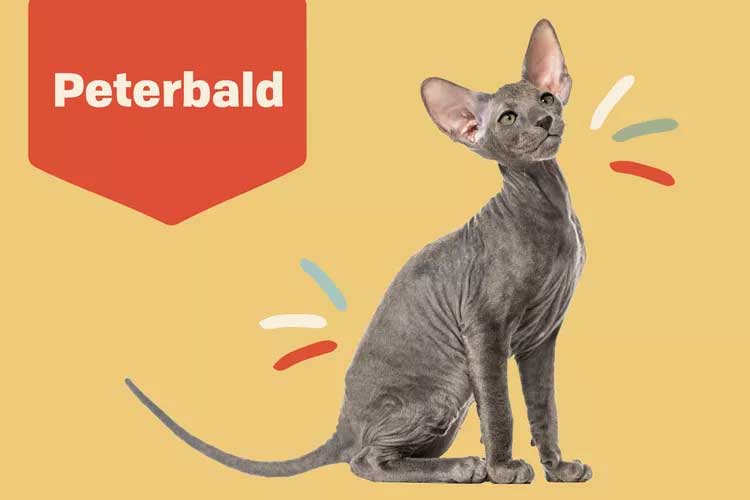
Peterbald Overview
| OFFICIAL NAME | Peterbald |
| COMMON NAME | Peterbald |
| PET HEIGHT | 8 to 12 inches |
| PET WEIGHT | 7 to 14 pounds |
| LIFESPAN | 12 to 15 years |
| GOOD WITH | cats, children, dogs, families, seniors |
| TEMPERAMENT | affectionate, sociable |
| INTELLIGENCE | medium |
| SHEDDING AMOUNT | occasional |
| PLAYFULNESS | high |
| ENERGY LEVEL | active |
| VOCAL LEVEL | frequent |
| COAT LENGTH | hairless, short |
| COLORS | black / ebony, blue / gray, fawn, lavender / silver, lilac, red / orange, white |
| PATTERNS | bi-color, color point, solid, tabby |
| OTHER TRAITS | easy to groom, friendly toward humans, friendly toward other pets, friendly toward strangers, good lap cat, strong loyalty tendencies |
A relatively new breed, the Peterbald is a Russian-bred cat with a very complicated relationship with fur. Coming in a variety of coat colors and patterns, the Peterbald can have a coat of short hair, fine peach fuzz, or no hair at all—all of which can change throughout the cat's lifetime.
But don't let the coat fool you; these cats aren't just a visual novelty. The Peterbald is a loving, affectionate, deeply loyal family cat breed that develops strong bonds with people and loves the company of other animals.
Appearance
Strap in, because there's a lot going on here. According to the breed standard, the Peterbald's coat can come in any of the following:Naked: The version people might be most familiar with is a Peterbald that's totally hairless, or those that have very fine short hair on the face, paws, and tail. Within this subset there is an even more hairless version called the "ultra-bald" type, which doesn't even have eyelashes or whiskers.
Chamois: A coat of very fine fuzz, which has sometimes been described as feeling like silk. This hair is extremely fine and soft to the touch. It may cover the entire cat's body or just appear in patches around the limbs and tail.
Flock: A coat of varying lengths that is made entirely of downy soft hair, much like the undercoat of a long-haired breed. Again, this coat is soft to the touch and very fine.
Brush: A coat (again of varying lengths) that is made entirely of wiry guard hair with a slight kink to it. This coat is rougher to the touch and can sometimes feel coarse or stiff.
Straight: A coat that lacks the Peterbald trait entirely and resembles an ordinary short cat coat. Genetically, Peterbalds with straight coats are identical to their bald relatives and they can be registered and bred as Peterbalds, but they're not championship material and only kept as pets or for breeding.
As an added bonus for multi-colored Peterbalds, the coat will sometimes grow in two distinctly different types of hair, with white parts of the coat being soft, downy hair and the darker spots being more wiry and coarse.
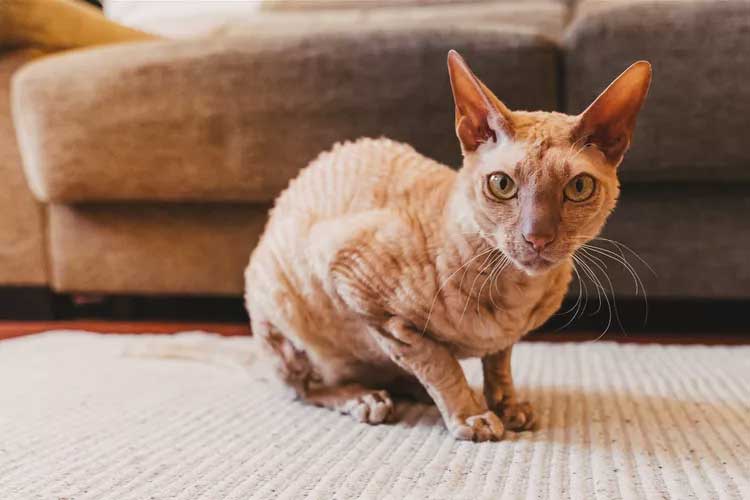
No matter which of the above categories your Peterbald kitten was born into, just know that he may not actually stay that way, as his coat may change over time. Nude Peterbald kittens have grown coats and straight-coated kittens have lost all their hair, all within the first two years of life. Peterbald whiskers are often a grab bag as well, sometimes appearing curled, crinkled, or even as barely there, vestigial whiskers.
The Peterbald is a medium-sized cat with a long, lean body shape, tight abdomen, and wedge-shaped head. Ears tend to be comically oversized, rounded triangles that take up much of the real estate on the sides and tops of their heads. Their almost almond-shaped eyes are on the large side and usually green in shade. The tail is long and whippy.
Temperament
The Peterbald is an incredibly affectionate, playful cat. He gets along famously with humans of all ages, shapes, and sizes, and he loves to follow his bonded family around the house as they go about their day.
"Peterbalds are sweet, affectionate, energetic, inquisitive, and intelligent," says Marilyn Krieger, certified cat behavior consultant in San Francisco. "They need activities and plenty of enrichment—they can become easily bored when alone for hours every day with nothing to do and no one to interact with."
Because he trends towards the more vocal side, you'll never wonder where your Peterbald is in the house, as he'll be happy to describe his day to you in real time. Peterbalds make marvelous house cats and are happy to climb into your lap when they can.
Living Needs
Extreme temperatures can be difficult for this little guy, since he doesn't have a lot of fur helping him regulate. If you live in a particularly chilly climate, make sure your Peterbald is kept warm with a heated cat bed and fuzzy sweater. And while colder climates might be a challenge, too much direct sunlight is problematic as well. For these reasons, the Peterbald should never be let outside on his own. He'll be happy as an indoor cat.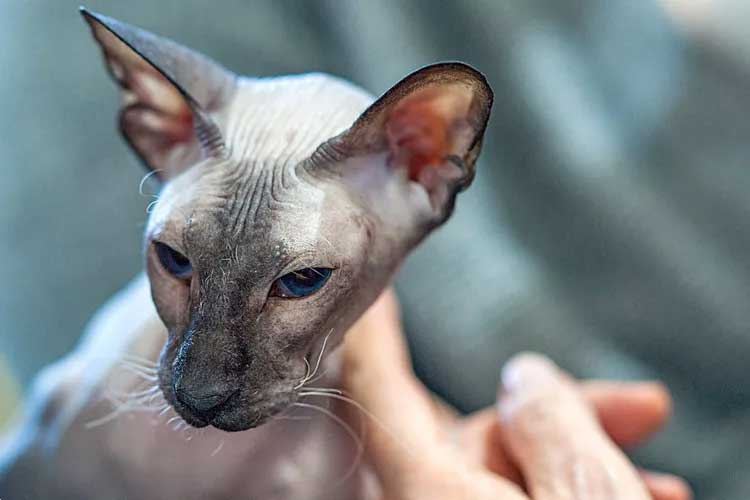
Beyond those basic concerns, the Peterbald is a pretty easygoing housemate. They enjoy toys and will climb a cat tree (and your kitchen cabinets) from time to time, but mostly enjoy following you around the house and watching you.
He'll generally get along well with other cats and cat-friendly dogs, Krieger says. They can also live well with gentle, quiet children who have been taught how to properly interact with pets. Playtime with other animals and smaller children should be at least passively monitored, however, because all that exposed skin does make the Peterbald susceptible to injuries like scratches and cuts, which will need to be disinfected and cleaned.
Care
Even though they have little-to-no fur, Peterbalds are pretty high-maintenance cats when it comes to routine care. They don't need to be brushed often (even straight-coat Peterbalds), but they do need regular baths, probably weekly."Due to a buildup of oil on their skin, they may need to be bathed every week or so, depending on how much fur the individual cat has," Krieger says.
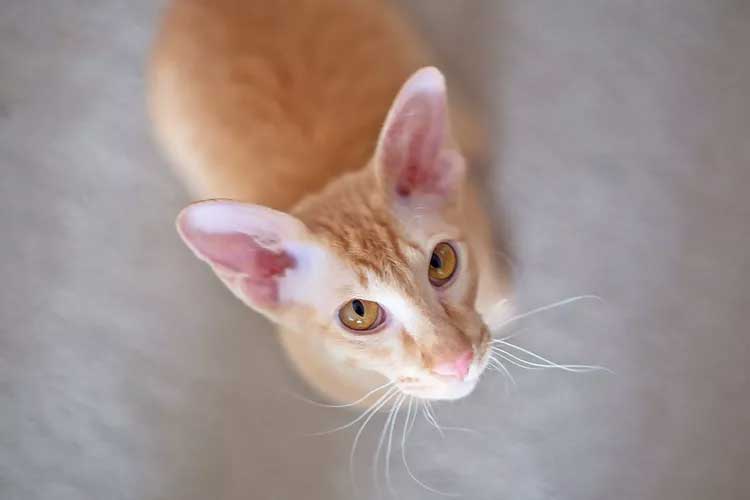
The natural oils in their skin and saliva will keep them moisturized and healthy, but regular bathing will keep those oils from building up and causing skin issues such as acne.
Feeding can sometimes be a complicated issue for Peterbalds. They have a higher than average metabolism, and might meow for food multiple times throughout the day. Talk to your vet about how much and how often you should feed your cat to keep him at a healthy weight.
Like all cats, Peterbalds will need their nails trimmed, their oversized ears cleaned, and their litter box kept tidy.
Health
The biggest daily issue you'll need to watch out for is your Peterbald's skin. Too much direct sunlight can lead to sunburn, and prolonged exposure can open up the potential for skin cancers, so keeping them shaded and indoors is important."Cats are prone to melanomas, just like humans," says Michelle Beck, DVM, CCRT, CVA, of the Backlund Animal Clinic in Omaha, Neb. "Sunscreen can definitely help, but in general, keeping them out of direct sunlight or indoors is going to be safer."
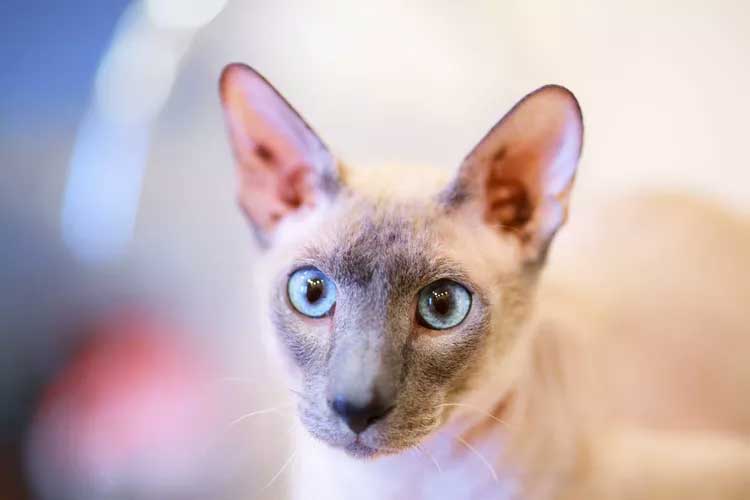
Additionally, making sure that any scrapes or cuts are properly cleaned and dressed will keep infections from setting in.
Beyond those issues, the Peterbald is such a new breed that there haven't been many breed-specific concerns raised yet. Keeping any eye out for common cat maladies as they age, like kidney and heart disease, is important.
History
The first recognized Peterbald was born in St. Petersburg, Russia, in late 1994 as the result of an experimental breeding between a Donskoy female and an Oriental shorthair male. For this reason, straight-coated Peterbalds can sometimes be mistaken for Siamese, and full nude ones are often mistaken for sphynx cats, but the Peterbald is now a genetically separate breed.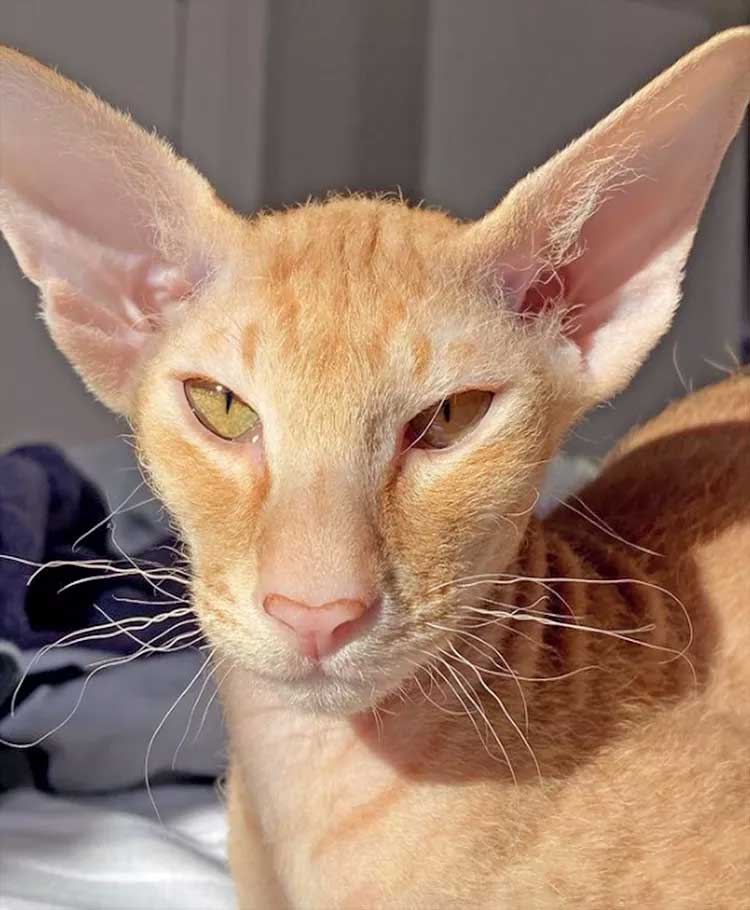
While the gene that creates baldness appears to follow basic Mendelian genetics (in an average litter, one in four cats will be bald, one in four will have an ordinary coat, and two in four will have some middle variation of coat), there is currently no understanding for why some Peterbalds change their coat—or lose it entirely—over their lifetimes.
The Peterbald was accepted for championship competition by The International Cat Association (TICA) in 1997 and by the American Cat Fanciers Association in 2008.
Fun Facts
The Peterbald's gene for baldness is dominant, so crossbreeding with other cats can produce hairless kittens.The Peterbald is one of just six recognized hairless cat breeds in the world, along with the sphynx, Donskoy, bambino, Ukrainian Levkoy, and elf.
This breed isn't cheap. A Peterbald kitten can cost you as much as $2,000, and due to their high calorie requirements, owning one can run you as much as $1,200 a month, with vet bills, food, and toys factored in.